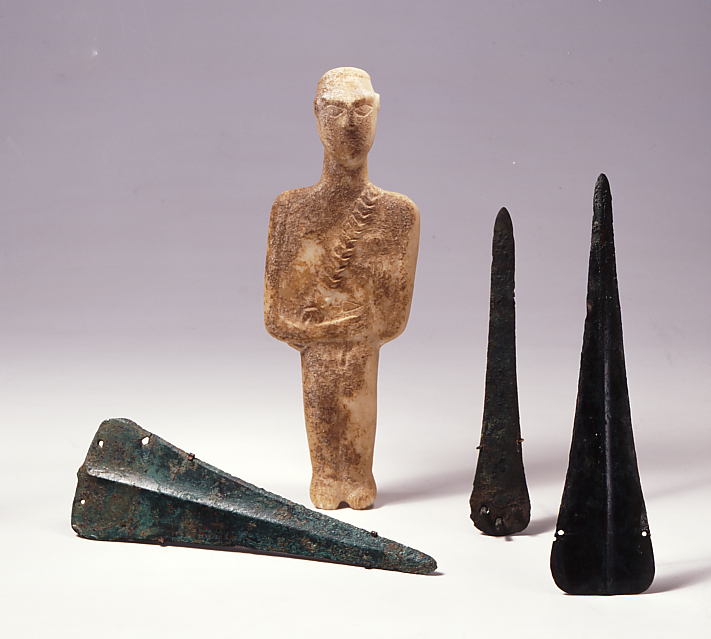Raw materials of the Cycladic Culture
CYCLADIC ART

MARBLE FIGURINES
Early Cycladic figurines were almost exclusively made of marble, and deposits of good quality white marble are available on most Cycladic islands.
However, isotopic analysis of marble artifacts shows that the main sources of marble in that period were on Naxos, Keros, and – to a smaller extent – Paros and Ios.
FIGURINES OF OTHER MATERIALS
In addition to marble, Cycladic or Cycladic-type figurines were occasionally made of other materials, such as green and black stone, limestone, pumice, white tuff, schist, green steatite, seashell, bone, ivory, flint, lead, bronze, and clay; wooden figurines may have also existed, although no examples have survived. The use of these materials may have been due to the lack of high quality white marble on certain islands, like Thera – where figurines were made of local white tuff or whitish clay.
Alternatively, the use of these materials may have been due, simply, to the familiarity of local craftsmen with materials other than marble – as seen in Crete, where figurines of ivory, flint, and green steatite have been found. We should stress, however, that seashell and clay figurines have been found on Naxos; an island where high quality white marble is common.
METALLURGY – METALWORKING
One of the major cultural innovations of the Aegean Early Bronze Age (3rd millennium BC) was the introduction of metallurgy – bronze-working in particular – from the East. In the Cyclades, metallurgy was developed during the Early Cycladic II period (2700 – 2400/2300 BC). The Cycladic islands had abundant sources of metal – copper was sourced from Kythnos and, possibly, Seriphos, and lead and silver were sourced from Siphnos.
Metal ores were also supplied by the mines of Lavrion in Attica. The most widespread metal was copper, which, at first, was mixed with arsenic and then, later, with tin, to create durable bronze alloys. These alloys were then used to make weapons (spearheads, daggers, etc.), tools (chisels, axes, drills, saws, fishing-hooks, etc.), toilet implements (pins, tweezers, etc.) and jewelry. Artifacts made of other metals are rare: silver jewelry and miniature vessels, bronze figurines, lead boat models, and clamps for repairs were occasionally found, however. Although gold was used throughout the Aegean during the Early Bronze Age, gold artifacts from the Cyclades are particularly rare.


